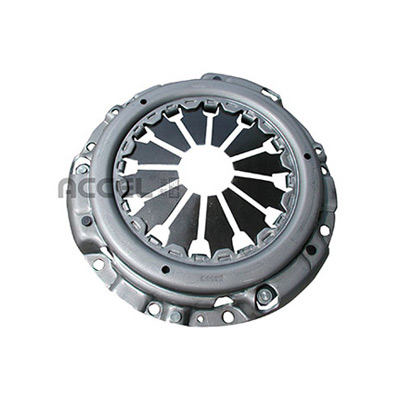- Arabic
- French
- Russian
- Spanish
- Portuguese
- Turkish
- Armenian
- English
- Albanian
- Amharic
- Azerbaijani
- Basque
- Belarusian
- Bengali
- Bosnian
- Bulgarian
- Catalan
- Cebuano
- Corsican
- Croatian
- Czech
- Danish
- Dutch
- Afrikaans
- Esperanto
- Estonian
- Finnish
- Frisian
- Galician
- Georgian
- German
- Greek
- Gujarati
- Haitian Creole
- hausa
- hawaiian
- Hebrew
- Hindi
- Miao
- Hungarian
- Icelandic
- igbo
- Indonesian
- irish
- Italian
- Japanese
- Javanese
- Kannada
- kazakh
- Khmer
- Rwandese
- Korean
- Kurdish
- Kyrgyz
- Lao
- Latin
- Latvian
- Lithuanian
- Luxembourgish
- Macedonian
- Malgashi
- Malay
- Malayalam
- Maltese
- Maori
- Marathi
- Mongolian
- Myanmar
- Nepali
- Norwegian
- Norwegian
- Occitan
- Pashto
- Persian
- Polish
- Punjabi
- Romanian
- Samoan
- Scottish Gaelic
- Serbian
- Sesotho
- Shona
- Sindhi
- Sinhala
- Slovak
- Slovenian
- Somali
- Sundanese
- Swahili
- Swedish
- Tagalog
- Tajik
- Tamil
- Tatar
- Telugu
- Thai
- Turkmen
- Ukrainian
- Urdu
- Uighur
- Uzbek
- Vietnamese
- Welsh
- Bantu
- Yiddish
- Yoruba
- Zulu
9월 . 22, 2024 19:06 Back to list
serpentine belt a
Understanding the Serpentine Belt An Essential Component of Your Vehicle's Engine
The serpentine belt is a crucial component of modern vehicle engines, playing a significant role in the overall functionality and performance of your automobile. This long, winding belt is responsible for driving multiple peripheral devices attached to the engine. These devices typically include the alternator, power steering pump, water pump, and air conditioning compressor. Given its importance, understanding the serpentine belt's function, maintenance, and replacement can save you time and money, as well as improve your car's reliability.
Functionality of the Serpentine Belt
The serpentine belt operates through a system of pulleys that allow it to connect and drive multiple engine accessories with a single, continuous loop. This design offers several advantages over earlier systems that used multiple V-belts. First, it reduces weight and space within the engine compartment, thus enhancing efficiency. Additionally, since it relies on a single belt, it simplifies installation and replacement processes.
When the engine runs, the serpentine belt is turned by the crankshaft, which then transmits power to the driven components. For example, the alternator generates electricity for the vehicle's electrical systems, the water pump circulates coolant to regulate engine temperature, and the power steering pump aids in reducing the effort required to steer your vehicle. If the serpentine belt fails, it can lead to the malfunction of one or more of these critical components, ultimately leaving you stranded or leading to significant engine damage.
Signs of Wear and Tear
Like any mechanical component, the serpentine belt can wear out over time. Therefore, it is essential to keep an eye on its condition and recognize the signs of potential failure. Common indicators of a worn serpentine belt include
1. Squeaking or squealing noises These sounds often indicate that the belt is slipping on the pulleys or has developed cracks, causing it to lose its grip.
serpentine belt a

2. Cracks or fraying Upon visual inspection, if you notice any visible cracks, frays, or missing pieces on the belt's surface, it is time for a replacement.
3. Power loss in accessories If you experience a decrease in the performance of accessories such as the power steering or air conditioning, the serpentine belt might not be delivering adequate power.
4. Dashboard warning lights Some vehicles have warning lights that indicate a malfunction in the charging system, which may signal a failing alternator due to belt issues.
Maintenance and Replacement
Regular maintenance can extend the life of your serpentine belt. It is generally recommended to inspect the belt every 20,000 to 30,000 miles, looking for signs of wear, as well as ensuring that it is properly tensioned. Many manufacturers suggest replacing the serpentine belt every 60,000 to 100,000 miles; however, depending on your driving habits and the environment, this can vary.
When replacing the serpentine belt, it's crucial not only to install a high-quality belt but also to ensure that it is aligned correctly with the pulleys. Incorrect installation can lead to premature failure and damage to surrounding components.
Conclusion
The serpentine belt is a vital component of your vehicle’s drivetrain, and understanding its role can help you maintain your car’s performance and reliability. Regular inspections and timely replacements can go a long way in preventing unexpected breakdowns, ensuring that your vehicle runs smoothly for years to come. By staying proactive about your serpentine belt, you can enjoy peace of mind on every journey you take.
-
Korean Auto Parts Timing Belt 24312-37500 For Hyundai/Kia
NewsMar.07,2025
-
7PK2300 90916-T2024 RIBBED BELT POLY V BELT PK BELT
NewsMar.07,2025
-
Chinese Auto Belt Factory 310-2M-22 For BMW/Mercedes-Benz
NewsMar.07,2025
-
Chinese Auto Belt Factory 310-2M-22 For BMW/Mercedes-Benz
NewsMar.07,2025
-
90916-02660 PK Belt 6PK1680 For Toyota
NewsMar.07,2025
-
drive belt serpentine belt
NewsMar.07,2025

